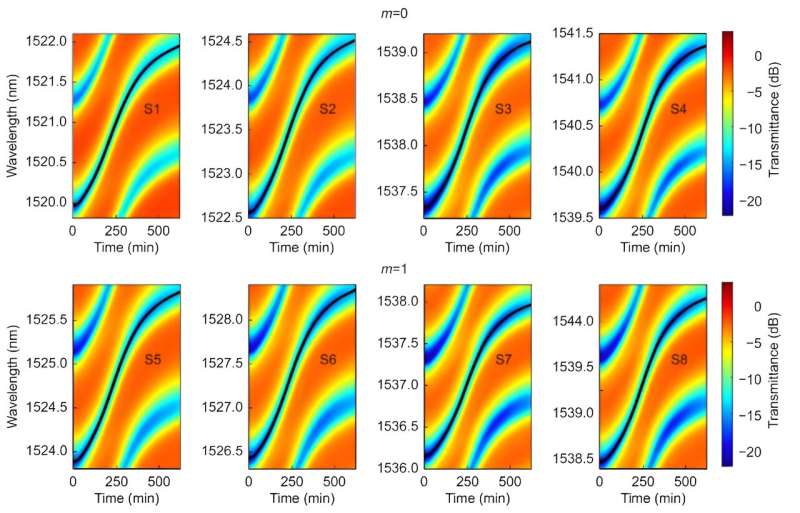This article has been reviewed according to Science X's editorial process and policies. Editors have highlighted the following attributes while ensuring the content's credibility:
fact-checked
proofread
All-fiber ellipsometer for nanoscale dielectric coatings

Measuring the refractive index and the thickness of thin films (films with a thickness from less than a nanometer to several microns) is essential to characterize them and improve the performance of sensors and devices that employ thin films. The most established method to simultaneously determine both parameters, with a wide range of available commercial solutions, is ellipsometry. However, this technique does not directly measure the thickness and the refractive index, but calculates them based on optical measurements and an optical model of the thin film material that must be known in advance.
The Sensors research group of Prof. Ignacio R. Matías from the Public University of Navarra (Spain), in collaboration with the Advanced Photonic Components Laboratory of Prof. Jacques Albert from Carleton University (Canada), propose a completely different approach to determine the thickness and refractive index of thin films, based on the wavelength shifts of multiple cladding mode resonances in tilted fiber Bragg gratings (TFBGs).
Optical fiber gratings consist of a periodic modulation of the refractive index along the core of an optical fiber, typically a single mode fiber with an 8 µm thick core and a 125 µm thick cladding. In the case of TFBGs, the grating period is in the order of the 500 nm, and the gratings are angled with respect to the perpendicular to the optical fiber axis.
The coupling between the light that propagates through the core and the light that backpropagates through the cladding (light is reflected by the gratings) causes the appearance of cladding mode resonances in the optical spectrum. These resonances occur at spectral intervals of the order of 1 nm over a wavelength range of around 100 nm. The simultaneous wavelength tracking of a large set of resonances, each one providing a separate measurement, enables to determine with accuracy multiple parameters.
In this work published in Opto-Electronic Advances, the thickness and refractive index of a titanium dioxide (TiO2) thin film deposited on an optical fiber with a TFBG inscribed on it are simultaneously measured by employing the wavelength shift of 8 resonances. This is achieved by comparing the experimental wavelength shifts of 8 TFBG resonances during the deposition process with simulated shifts from a range of thicknesses (T) and values of the refractive index (n).
The minimization of an error function computed for each (n, T) pair then provides a solution for the thickness and refractive index of the deposited film. The final values obtained by the TFBG (n = 2.25, final thickness of 185 nm) were both within 4% of the validation measurements, performed with a conventional ellipsometer and a scanning electron microscope.
This approach provides a method to measure the formation of nanoscale dielectric coatings on fibers in situ for applications that require precise thicknesses and refractive indices, such as the optical fiber sensor field. Furthermore, the TFBG can also be used as a process monitor for deposition on other substrates with deposition methods that produce uniform coatings on dissimilar shaped substrates.
The developed technique contrasts with other conventional methods to determine the properties of such thin films that rely on co-located witness samples, such as ellipsometry, or on destructive measurements using some of the coated fibers. Therefore, the proposed method could serve to overcome these limitations and establish a new standard for measuring the thickness and refractive index of thin films deposited on optical fibers.
More information: Jose Javier Imas et al, All-fiber ellipsometer for nanoscale dielectric coatings, Opto-Electronic Advances (2023). DOI: 10.29026/oea.2023.230048
Provided by Compuscript Ltd




















